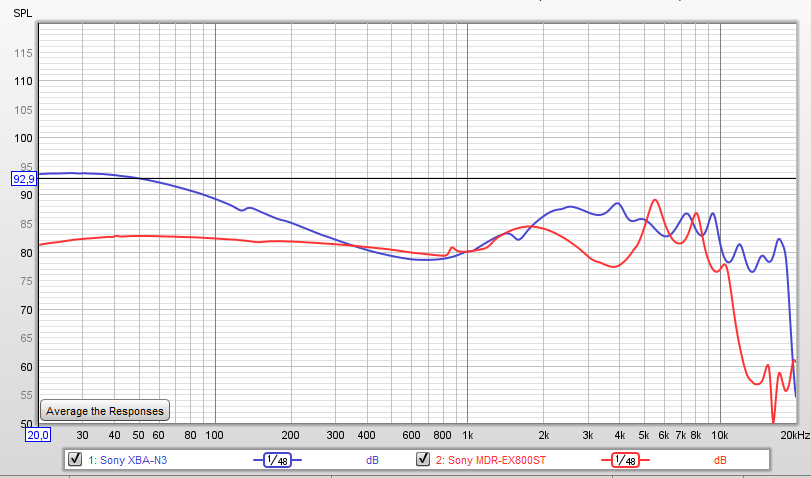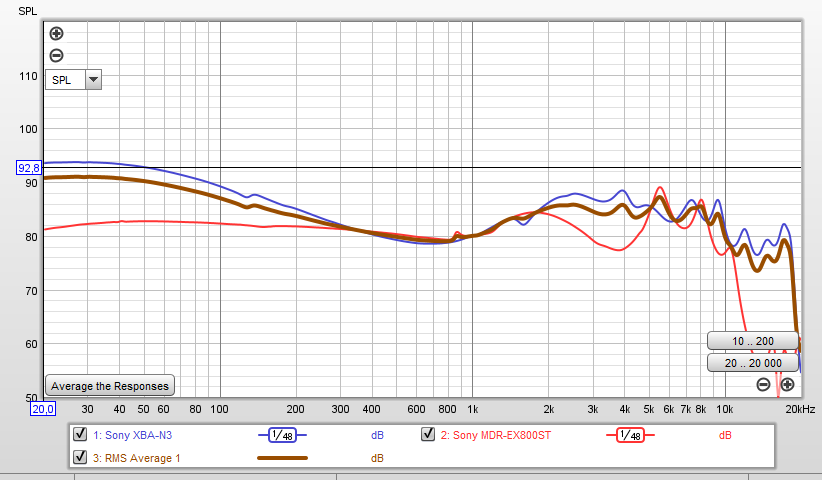yeah, luckily I have brought that down now. I listen to buds single ended at around 225 mV which is about 82dB. I assume hitting 82dB will be easy enough for the Qudelix 5K with the Serratus
To be fair, you don’t HEAR sub-bass anyway, you feel it. But I’m being pedantic, I know
Define hearing and define feeling ![]()
In fact sub bass (20 to approx. 60 Hz depending on the definition) should be normally within human hearing (so perceived and transmitted by the auditory system) range.
I have heard it fairly briefly, but if you have anything basic you want to know I can do my best to answer.
Fair enough: Yes, you hear sub-bass.
What is meant by “feeling” it (IMO) is that at 20Hz, if you do a sine sweep it’s less about hearing the sound as feeling the vibration. Like if you hum in a closed mouth, if you pitch the hum higher you hear the hum. If you lower your octave you feel it in your throat as much as you hear the actual noise. Deep sub-bass does that effect. A sine tone at 20Hz, you feel it in your ear more than hear it. By 60Hz you’re getting more “sound” than “feel”
Probably very subjective feeling and description thereof as everything in the hobby, but I get your point. Nevertheless I may be very insensitive in this range if I don’t feel very overwhelmed by the bass in Maestro Mini and really I would say I am quite far off ![]()
No worries, you were right to check me on my half-baked comment. Made me put it back in the oven.
Also, I struggle a lot with telling sub-bass from mid-bass when listening to things. So getting it right, and figuring out what you’re hearing is hard!
This one?
Sorry forgot there is another Meteor and I wish for your wallet it was the one you linked. Unfortunately it is the one below.
Yes, what you need to know?
![]()
I’m actually saving up for the Mest MKII and was hoping to find something that’s not too expensive for a fun/complementary set. Thor MKII seemed just rightly priced for that but if it’s too warm then maybe it’s time I give the OH10 a chance. I’ve heard good things about it.
Very well written impressions. That’s what it is, impressions. Don’t try to write reviews instead, you’ll lose the soul in the process.
I’ve heard the FD5 and OH10 so can give you a small comparison since you have FD5. These are just initial impressions as I sent the OH10 back in the end, but I’ll tell you why I sent it back.
FD5 had a more natural large soundstage. OH10 was wide like FD5, but it wasn’t as natural as the FD5. Imaging was about the same for both, with a slight edge to FD5 due to the more natural stage. bass felt a bit more defined to me on FD5, but they were very similar. OH10 sounded more aggressive and in your face in the mid and treble regions and had a slight metallic timbre to it. overall, the FD5 just sounded way more cohesive, effortless, and laid back while having a similar FR.
Might have kept the OH10 as it was a better performance for money, but it was SO heavy that it was uncomfortable.
FD5 had some rough sibilance though. DD roughness at 5-6kHz is some of the worst imo.
For me it’s the 3 kHz region that I’m sensitive to. I generally don’t have issues with 5-6 kHz ranges and to me FD5 was a smooth performer.
It could also be the sources I use as the EF400, Gryphon, BTR7, Mojo 2… are not really analytical sounding.
Is there a way to use squigs and possibly a combo of other software to come up with an average? What I’d like to do is take my top 5 IEMs from @nymz squigs and then come up with a average frequency target. Thinking this would get me around my preferred target as a lot of the IEMs share similarities.
do keep in mind that you cant really translate a sine tone at x frequency directly to the instrument that will also play at x frequency. That is because instruments plays at fundamental tones (which could be X frequency in this example) and also overtones that play 2x, 3x,4x…etc of the frequency.
A simple sine tone does not have overtones.
Why are overtones so important? Because they determine both the timbre that we hear (why instrument A sounds like A and not B even if they are playing the same note) as well as help with the perception of the fundamental note, this is called the “missing fundamental”.
Where if the fundamental tone is at 20hz, then the first overtone is 40hz, second 80hz, third 160hz, and so on. (multiples of 2)
But if you say, remove the fundamental tone (20hz), but keep the overtones, your brain will basically still perceive that 20hz tone and the overall pitch is the same. (this is the way earbuds make it so you can actually hear those low notes.)
REW has that function, so you can do it as long as the files are available to you.
(average fr of the XBA-N3 + MDR-EX800ST)
^^^ x2 timbre accuracy, note speed and decay can be a deal breaker for folks what ever the pitch…graphs give you a good idea of a sets overall sound but not the whole story.
Damn no way to extract those from squigs I’m guessing? Sounds like what your saying is it gives me an excuse to buy an IEC-711 Clone.


